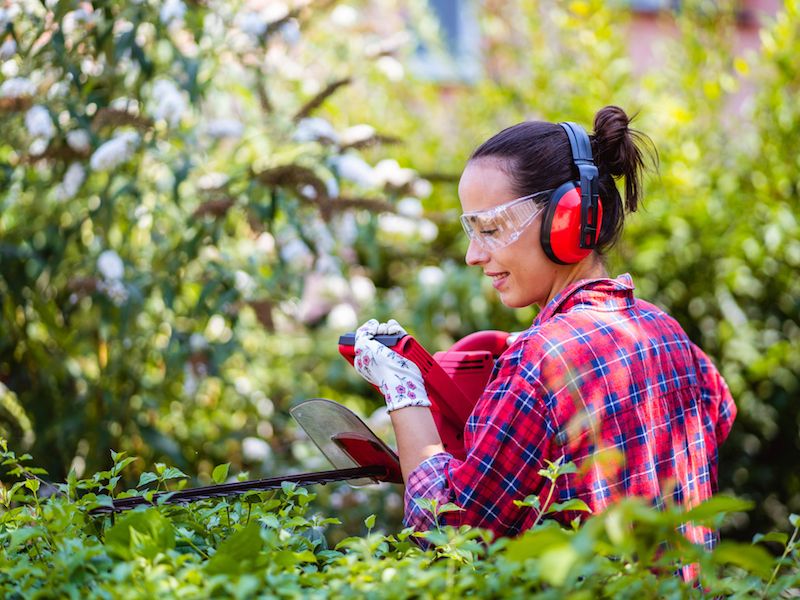
Safeguarding your hearing is similar to eating right. It’s difficult to know where to start even though it sounds like a smart idea. If there aren’t any obvious noise risks and you don’t think your environment is very loud, this is especially true. But your ears and senses can be stressed by daily living, so your auditory acuity can be maintained if you apply these tips.
If you want to keep enjoying the sounds around you, you should do everything you can to impede down the impairment of your hearing.
Tip 1: Wearable Hearing Protection
Using hearing protection is the most practical and basic way to safeguard your ears. This means taking basic steps to diminish the amount of loud and harmful noises you’re subjected to.
For many people, this will mean using ear protection when it’s needed. Two basic forms of protection are available:
- Ear Muffs, which are put over the ears.
- Ear Plugs, which are placed in the ear canal.
Neither form of hearing protection is inherently better than the other. Each type has its benefits. Your choice of hearing protection should, most importantly, feel comfortable.
Tip 2: When Sound Gets Harmful, be Aware of It
But how can you tell when to use hearing protection? We’re used to connecting dangerous noise with painful noise. But much lower volumes of sound can injure your ears than you might realize. After only a couple hours, as an example, the sounds of traffic are enough to injure your hearing. An essential step in protecting your hearing, then, is knowing when sound becomes dangerous.
The following threshold is when sound becomes hazardous:
- 95-100 dB: This is the typical volume of your earbuds or the level of farm equipment. After about 15-20 minutes this level of noise becomes dangerous.
- Over 100 dB: This is where you can damage your hearing very quickly. Anything over this limit can damage your hearing in minutes or seconds. As an example, jet engines and rock concerts will damage your hearing in 30 seconds.
- 85 decibels (dB): This level of sound is harmful after roughly two hours of exposure. This is the volume of sound you’d expect from a busy city street or your hairdryer.
Tip 3: Turn Your Phone Into a Sound Meter
Now that we have a basic concept of what levels of sound could be hazardous, we can take some steps to make sure we minimize our exposure. The trick is that, once you’re out and about in the real world, it can be difficult to gauge what’s too loud and what isn’t.
Your smartphone can now be used as a handy little tool. Sound meter apps exist for every type of smartphone.
In order to get an idea of what harmful levels of noise really sound like, use your sound meter to check the decibel level of everything you are hearing.
Tip 4: Keep an Eye on Your Volume Buttons
A smartphone with earbuds is usually the way people listen to music nowadays. This sets up a risky scenario for your hearing. Over years of use, earbuds set to a substantially high volume can cause significant damage to your hearing.
So keeping an eye on the volume control means protecting your hearing. In order to drown out sounds elsewhere, you should never raise the sound level. And we recommend using apps or configurations to ensure that your volume doesn’t accidentally become hazardously high.
If your hearing begins to wane, earbuds can become something of a negative feedback loop; you could find yourself consistently increasing the volume of your earbuds so that you can compensate for your faltering hearing, and in the process doing more harm to your hearing.
Tip 5: Get Your Hearing Checked
You may think that having a hearing exam is something you do only when your hearing starts to wane. Without a standard to compare results to, it’s not always easy to detect a problem in your hearing.
Generating data that can be used for both diagnostic purposes and for treatment can be best achieved by scheduling a hearing exam and screening. This will give you a little extra perspective for future hearing decisions and ear protection.
Pay Attention to Your Hearing
In an ideal world, protecting your ears would be something you could do continuously without any problem. But there will always be challenges. So whenever you can and as often as possible, safeguard your hearing. Also, get routine hearing exams. Hopefully, these tips will help you get a good start.